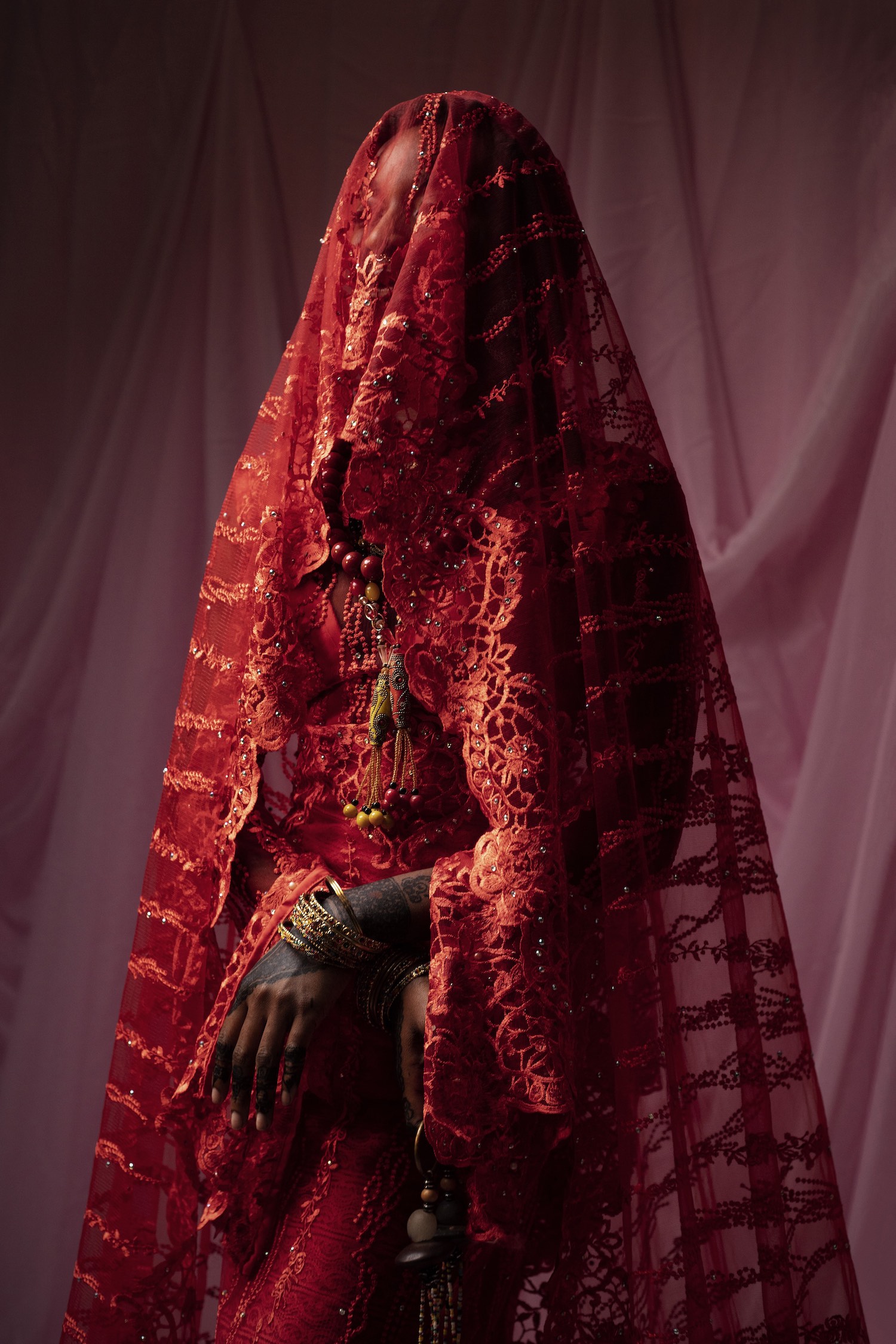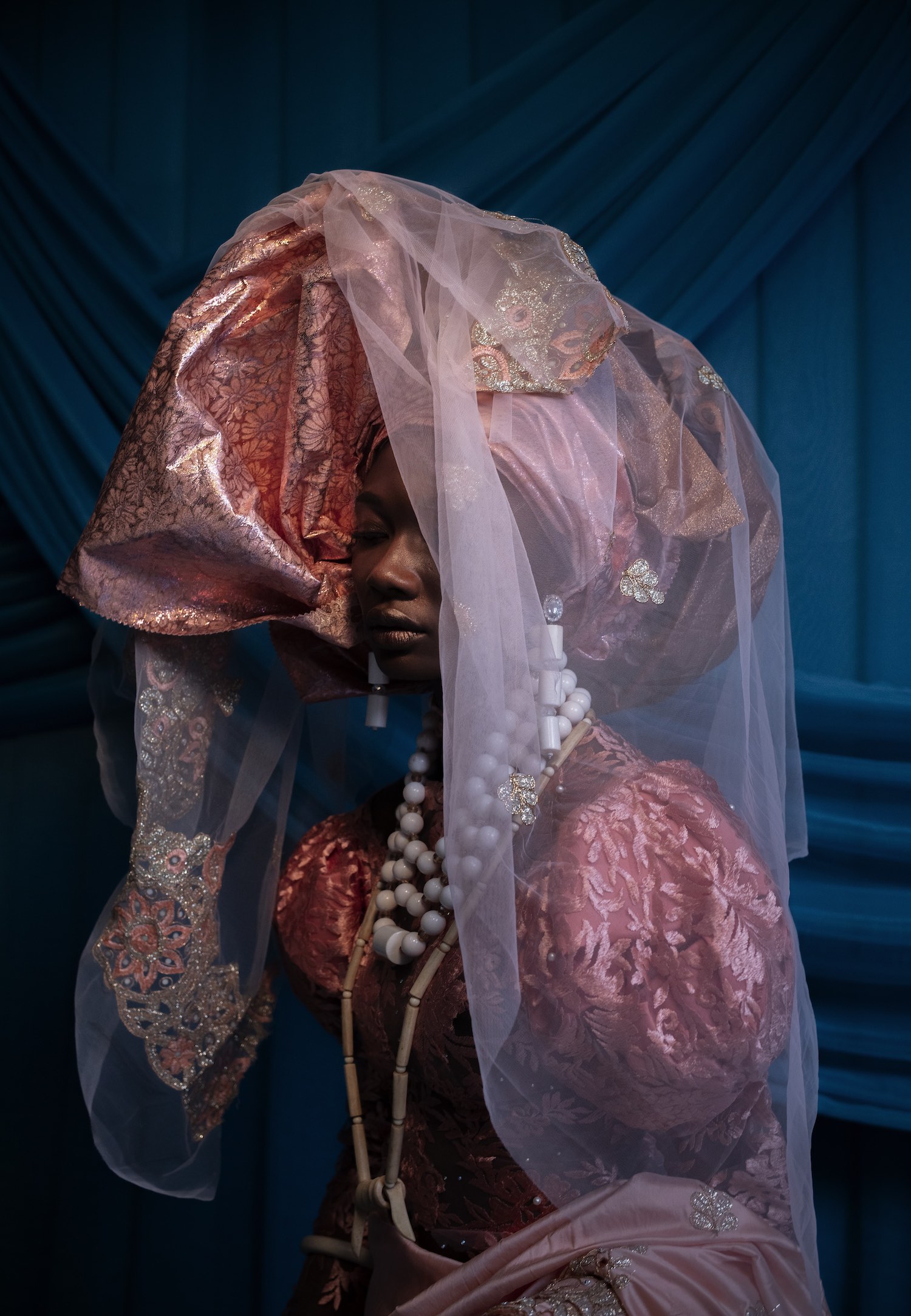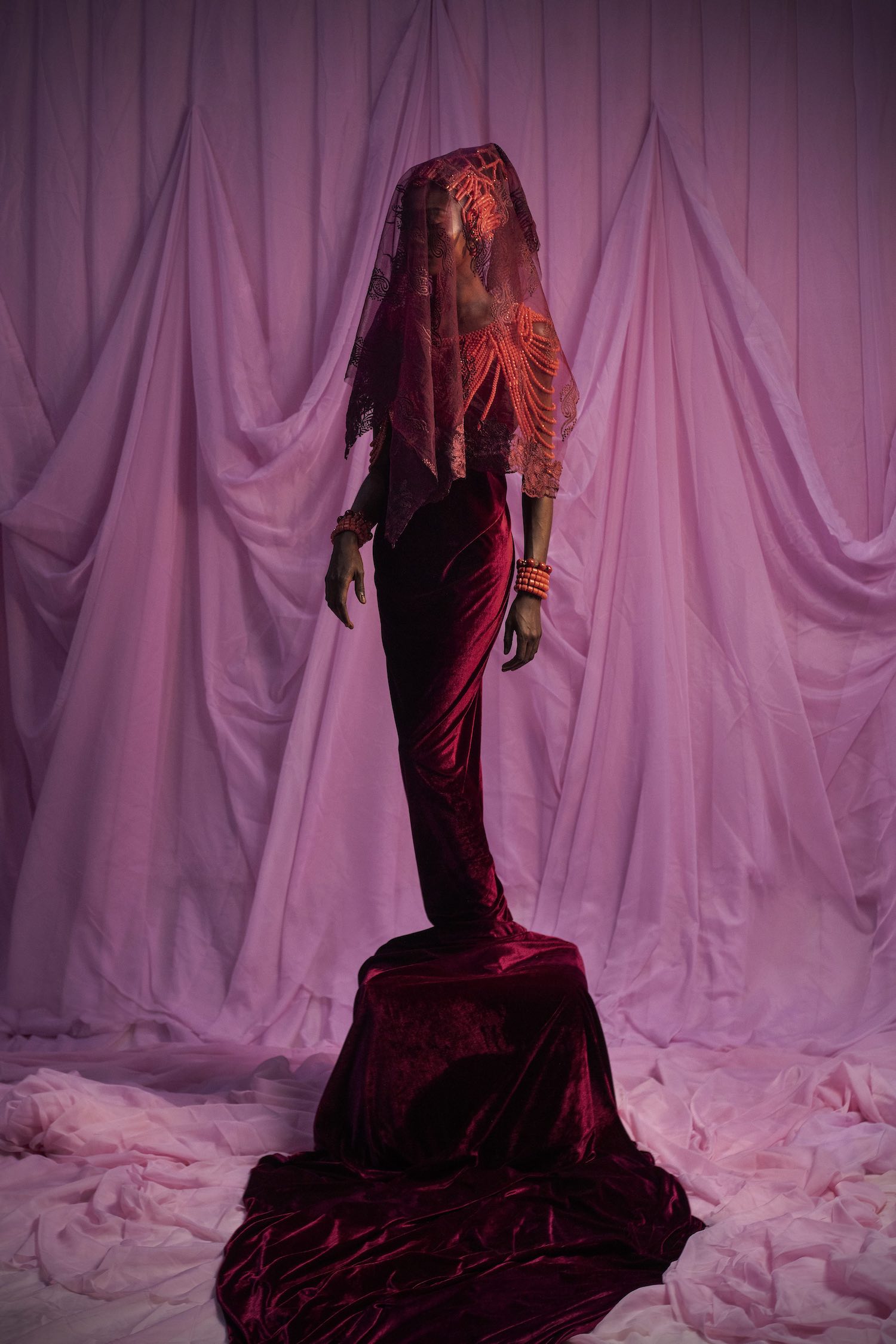e wá wo mi meaning come look at me in Yoruba, is a new photographic series by Nigerian artist Lakin Ogunbanwo which examines the ritual of the wedding ceremony. Igbo brides are adorned with orange beaded caps, necklaces or ivory bracelets. The Yoruba bride wears a gele – a stiff pleated headscarf – indicating both cultural pride and social status. She holds a feather hand fan complimenting her dancing form. The Hausa-Fulani bride rests her henna-stained hands on a dress of lavish red lace.
The main notion with which Ogunbanwo concerns himself is the culture that exists around Nigerian brides and the ritualistic practice of marriage ceremonies. Brides are pictured as veiled, this veiled portraiture then is a means of not only recording the multifaceted nature of culture but as a way to offset rigid Eurocentric narratives of Africa and women. The photographic series lenses the traditional ceremonial wear of the Igbo, Yoruba and Hausa-Fulani tribes.
Lensing these women as cut off from the realities of the wedding ceremony within the frame of singular portraits, the activities associated with the practice do not steal away from the focus of the bride and Ogunbanwo’s message. There are no traces of planners, caterers, guests, families, food, décor or the customary wedding shoot.

The work does not attempt to archive past-traditions but rather to simulate the performativity of wedding ceremonies specifically within Nigeria. The backdrop of this performativity is that of extravagant sets created with draped fabric. These women embody the performance of cultural and familial pride, love, feminine strength and a heterogeneous African identity yet we see in them reflected the weight of being wives, daughters-in-law and mothers. Ogunbanwo expresses “I’ve found weddings to be very performative and most of the performance generally rest on the bride.”
“From how she dresses, to how she carries herself, to what she is told. She will be fertile, she should be submissive and supportive: These are the things she hears on that day.”
On the day of the wedding, it is customary for the bride to not only be watched but appreciated for her nearness to a societally constructed version of womanhood. She must be (according to these standards) feminine, emotional, elegant and grateful. Commenting on this Ogunbanwo clouds the women’s individuality by means of veiling their likeness. The veiled technique rises as a stylistic choice by the artist that has become a motif.

The focus placed on the bride makes of her a symbolic individual lending the portraits a sense of majesty and dignity. The way the styling is approached mimics these elements making the women appear as goddesses, queens and courtesans that reminds one of the depictions found in Renaissance paintings. Ogunbanwo’s use of soft lighting, as well as the magnificence of his constructed scenes, make of these brides celebrated women while he simultaneously critiques the absenteeism of ‘blackness’ in these archives.
A re-imaging of Eurocentric beauty standards takes place as his visual language is implemented as a means of framing these African women as beautiful and confident sitters. What remains evident is the fact that these brides are aware of being looked at and thus they perform with a viewer in mind.

A conflict emerges in these images between tradition and contemporary fashion; global influence and local practice; oppression, legacy and empowerment. This is visually represented in the use of Aso-Oke (prestige cloth) specific to the Yoruba, sharing a space or alternatively it can be seen as a body, with taffeta, lace, silk, velvet, damask, adire or guinea.
Reaching beyond the “white wedding” by lensing Nigeria’s alternative celebrations of marriage Ogunbanwo feels that there is more than one static way in which to marry, be female and be African.
e wá wo mi is showing at WHATIFTHEWORLD gallery from the 10 April – 1 June 2019.




















































